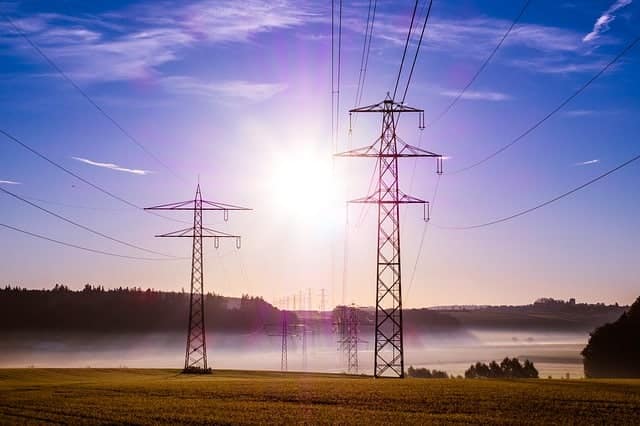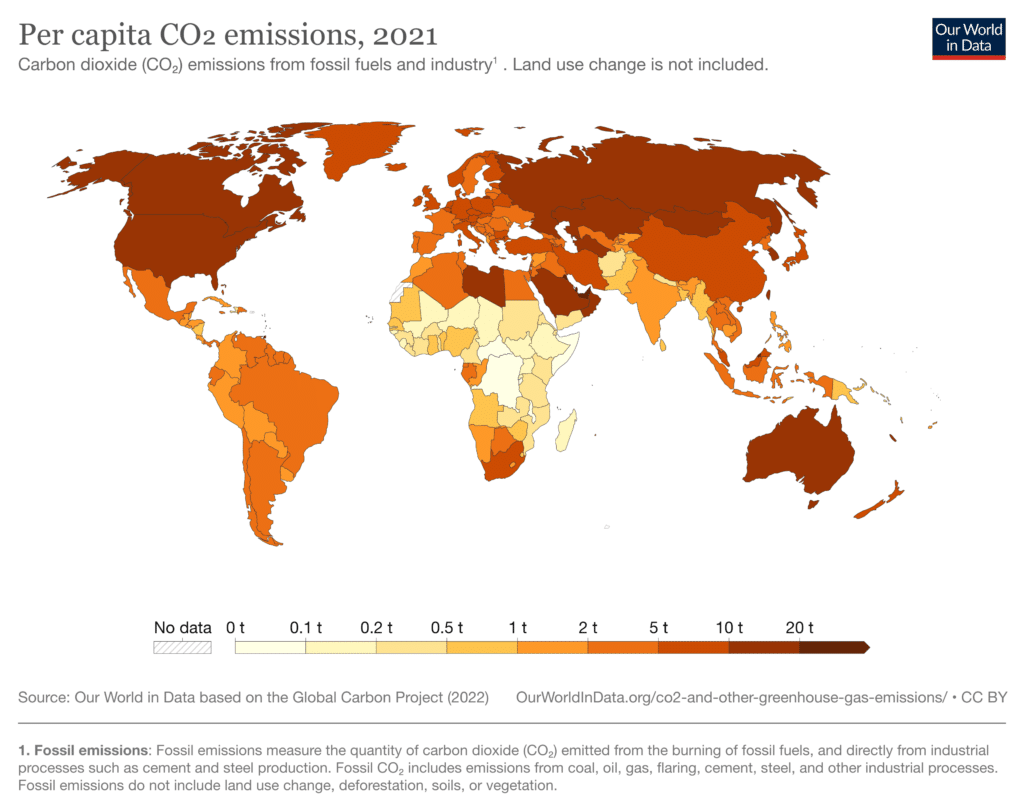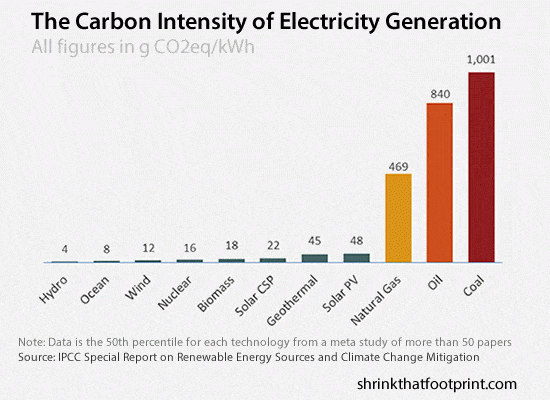
What is the Greenest Source of Electricity?
Hydropower is the greenest source of electricity. Among the different renewables (see here for more info on the difference between renewable and non-renewable energy), hydropower has been estimated to have the lowest carbon emissions per kilowatt hour. This is according to an IPCC report based on a meta-study of other studies. Read on to find out more.
In 2014 French Prime Minister Manuel Valls reiterated President Hollande’s plan to cut French dependence on atomic power to half of all output by 2025, down from almost 75% currently. The plan is to curtail nuclear and ramp up renewables. In his speech he noted that:
The climate is probably the area where regulation is most needed . . It’s a major challenge for the planet and we will respond with a real low-carbon strategy.
I’m not sure if the context of this quote has gone missing in translation, but I’m guessing that switching from nuclear to renewables is not how France intends to cut its emissions by 40% by 2030. I’m sure it isn’t, because that simply isn’t a mitigation strategy.

In the map above we can see that France already has very low carbon electricity, just 79 g CO2/kWh in terms of carbon dioxide emitted at plants. This figure is so low precisely because they have so much nuclear. In fact their carbon productivity of 0.15 kg CO2/$ makes most countries look like climate laggards (the US is 0.4 for example, and China is 2.1).
Read here if you’d like to see our recent analysis on the carbon intensity of each country.
Reading this story made me wonder how well people understand the carbon intensity of electricity generation. So here is a quick primer, based on an excellent IPCC meta-study of the issue, looking at full lifecycle emissions of electricity production.

It’s basically pretty simple. Fossil fuels are high carbon sources of electricity while other generation sources are low carbon.
Coal is the most carbon intensive, followed by oil and then natural gas (natural gas is a non-renewable resource for those confused by the terminology). Solar PV and geothermal are slightly more carbon intensive than other non-fossil sources, but still very low carbon compared to any fossil fuel. If you dig into the study you can see the range of data points across different studies for each technology.
So what is the “greenest source of electricity”?
If you are looking just at carbon then hydro is a decent bet, closely followed by ocean power, wind and nuclear. If we could actually make it work biomass with carbon capture and storage (CCS) would be quite something, preferably using the waste from some fast rotation food staple. In the IPCC meta-study biomass with CCS has estimates from -1,368 to -598 g CO2eq/kWh. Sadly this option looks like it is a very long way from being commercially scalable.
10 Most Common Electricity Energy Sources And Their Carbon Intensity
The above chart is turned into a convenient table.
| Energy source | Carbon intensity (gCO2/kWh) |
| Hydro | 4 |
| Ocean | 8 |
| Wind | 12 |
| Nuclear | 16 |
| Biomass | 18 |
| Solar CSP | 22 |
| Geothermal | 45 |
| Solar PV | 48 |
| Natural gas | 469 |
| Oil | 840 |
| Coal | 1001 |
High-Level Observations – Sharp Disparity Between Fossil Fuels and Renewables
- Renewable and Nuclear Energy: The energy sources with the lowest carbon intensities are predominantly renewable, such as hydro, ocean, and wind, along with nuclear energy. These sources have carbon intensities of 16 gCO2/kWh or less.
- Fossil Fuels: The energy sources with the highest carbon intensities are fossil fuels – natural gas, oil, and coal. These three sources have carbon intensities of 469 gCO2/kWh or higher. Natural gas is not really good as a bridge fuel given that it will only slow down carbon emissions by fraction.
- Range of Intensity: There is a significant disparity between the lowest and highest carbon intensities. Coal, the most carbon-intensive energy source, emits over 250 times more CO2 per kWh than hydro, the least carbon-intensive source.
Detailed Observations
Detailed Observations
- Hydro: Hydro power is the least carbon-intensive energy source on the list, producing only 4 gCO2/kWh. This is due to the fact that it harnesses the kinetic energy of flowing water to generate electricity, without combustion and hence minimal CO2 emissions.
- Nuclear: Nuclear power is also a low-carbon energy source, with an intensity of 16 gCO2/kWh. While the process of nuclear fission does not produce CO2, the emissions accounted for here likely come from the lifecycle of the power plants, including construction, operation, uranium mining and enrichment, and waste disposal.
- Biomass: Biomass has a comparatively higher carbon intensity among the renewables at 18 gCO2/kWh. This is because it involves the combustion of organic material (like wood pellets) to produce energy, which emits CO2. The great thing about biomass is that this is a closed cycle. Released carbon comes back into plant matter.
- Solar CSP vs Solar PV: There’s a slight difference in carbon intensity between Concentrated Solar Power (CSP) and Photovoltaic (PV) solar energy, with CSP being less carbon-intensive. This likely reflects differences in their manufacturing, installation, and operation processes.
- Natural Gas, Oil, and Coal: Among fossil fuels, natural gas is the least carbon-intensive, but it still emits almost 30 times more CO2 per kWh than the highest non-fossil source (Solar PV). Oil and coal are far worse, with coal being the most carbon-intensive energy source on the list at 1001 gCO2/kWh. This underlines the significant environmental impact of continuing to use these energy sources.
So which do you think is the greenest source of power? Does your definition of green extend beyond just carbon?
Lindsay Wilson
I founded Shrink That Footprint in November 2012, after a long period of research. For many years I have calculated, studied and worked with carbon footprints, and Shrink That Footprint is that interest come to life.
I have an Economics degree from UCL, have previously worked as an energy efficiency analyst at BNEF and continue to work as a strategy consultant at Maneas. I have consulted to numerous clients in energy and finance, as well as the World Economic Forum.
When I’m not crunching carbon footprints you’ll often find me helping my two year old son tend to the tomatoes, salad and peppers growing in our upcycled greenhouse.
